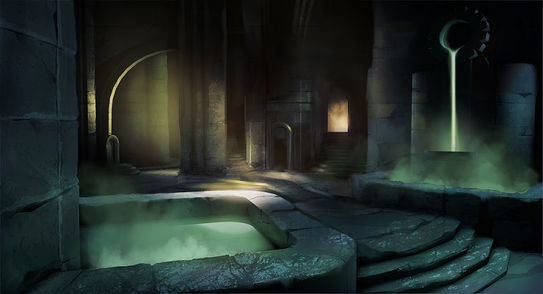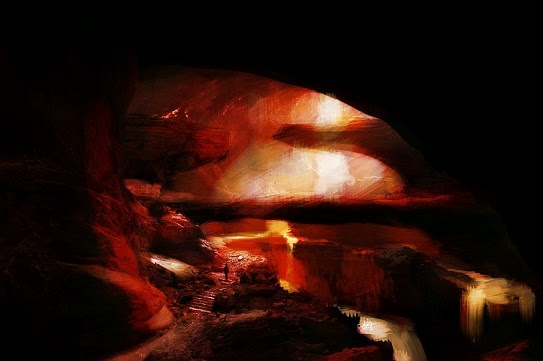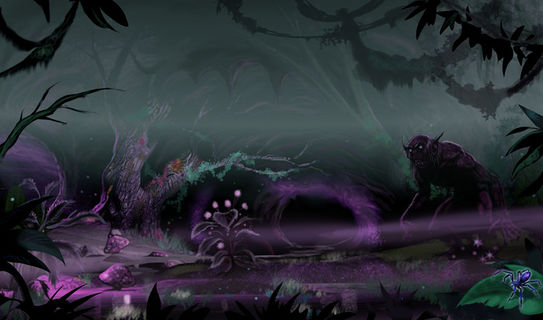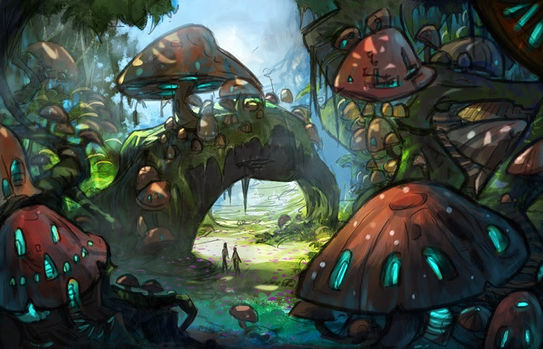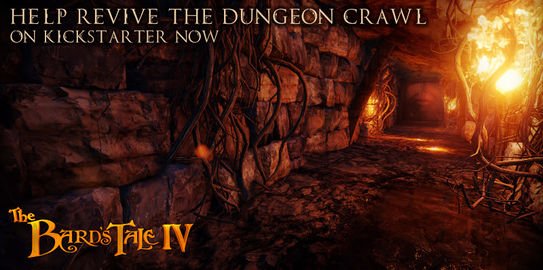Difference between revisions of "Stygian Sentinel 2"
| Line 70: | Line 70: | ||
==External Links== | ==External Links== | ||
| − | * [https:// | + | * [https://underworldascendant.com/news/65_update.php Stygian Sentinel #2] |
[[Category:Update|Stygian Sentinel 2]] | [[Category:Update|Stygian Sentinel 2]] | ||
Latest revision as of 22:59, 5 June 2015
What’s in a Biome?[edit]
Issue #2, June 5th 2015
Last week we shed light on how Art Lead Dave has begun concept work on nailing down how the Underworld will look, how we’ll use lighting in the game, and what proportion of natural vs. man-made structures will make up the Abyss. This week we thought we’d talk about what kinds of environments will make up the Underworld, and how the different areas will affect not only the look of the Underworld, but also what can be found there.
Basically, let’s talk about biomes.
We’ve already revealed that we plan for Underworld Ascendant to have a fully functioning ecological system and will be filled with flora and fauna that are established in clearly defined predator/prey tiers, feeding on each other, migrating when food becomes scarce, and proliferating when food is in abundance. This system will be self-sustaining and perpetual.
Well, at least until the player shows up and starts messing with things.
But, the Underworld isn’t going to have just one established food chain with every creature neatly fitting into a specific slot on the chain. Just as in the real world, the Underworld will have different areas, different biomes, each with their own natural inhabitants and each with unique food chain structures.
Not only will this feel more “real” but it also allows us to make different areas of the Underworld unique and different. And just as each area will have a different look, they will also have a different feel.
So, what are the types of biomes we can expect to find in the Underworld? And what types of life will be found in each?
Most of the Underworld is likely to consist of “typical” cavern and excavated areas, the type of terrain one would expect to find in a dungeon crawler: dry to damp passageways, small open areas with all sorts of stalactites and stalagmites, carved out chambers, stairwells and ancient ruins. We can think of this type of terrain as the standard for the Underworld, on which the rest of the biomes will be based.
As such, the typical cave biome will also hold the most variety of life. It’s an easy place to get by, after all. It has water, but isn’t too wet. It’s cool to warm. It has a varying level of natural light (bioluminescence). And lots of room for different varieties of plant, fungus and creature to find a niche and thrive.
Variety breeds stability. We can expect the typical cave biome to have a much more solid foundation to its ecology than other biomes. If one food source dies out or leaves, others can be found with little stress to the system. If a predator starts to become numerous we can expect their predators to whittle down the numbers fairly quickly. Of all the biomes, the natural caves are the most balanced and stable.
The hot caverns biome requires a bit more specialization from its inhabitants. Filled with lava flows and pools, the hot caverns are quite dry and, well, pretty hot. For life to exist here it’s going to have to get creative. Plants or fungus with deep roots to reach as far as possible for moisture; predators who can hunt at a distance from the cooler perimeter away from the lava.
This being a fantasy world, however, means this creativity can take some pretty dramatic directions. Hellhounds and lavabats, for instance, literally have fire in their bellies, with the later actually using lava as a means for digestion. These guys don’t give a whit about the existence of water and thus would be some of the more common creatures found in this biome.
Light will be pervasive in the hot cavern biome, as perpetual as the flow of lava itself. How do predators work in a setting with almost no darkness? What changes in behavior will this cause? Creatures with a natural camouflage might become dominant, like that of the Shadow Beast who can blend perfectly into his environment regardless of the level of light.
We can imagine the Underswamp biome being almost the polar opposite of the hot cavern biome. Here, water is everywhere, and darkness and shadow. Finding sustenance is easy in the Underswamp and therefore is a less important skill to have. Being able to defend against your predators starts to become paramount. And in the Underswamp there are plenty of predators…
With so much food to be found growing in the Underswamp, from lichens and plants to trees and mushrooms, it is here we start to see the first true herbivores and grazers in the Underworld. But, unlike deer or antelope, grazers have to use more than simple speed to avoid becoming someone else’s lunch; though big, the Underswamp isn’t so big that a creature could run for miles to get away from a predator.
Size is always a good defense mechanism, and in the Underswamp we begin to see some truly massive animals, the lurker being a prime example. Other defenses come to light as well, the spiked shell of the stygian turtle, or the mind-numbing gaze of the catoblepas.
With so many things eating them, plants in the Underswamp have developed defenses too. Poisonous mushrooms are a constant danger, of course. Another is gasmoss, globular plants that fill themselves with swamp gas and explode when bitten into. The Underswamp is filled with unpleasant surprises.
The fungal forest biome presents its own interesting quandaries to predator and prey alike. Dark and damp and filled with sound deadening fungal turf and growths, this mock forest is eerily quiet and dangerous. Improved senses are a must for both the eater and the possibly eaten, as well as a digestion suitably disposed towards lots of mushrooms.
Of all the biomes in the Underworld it is hardest to track and hunt prey in the fungal forest. With plenty of line of sight obstructions, and the spongy, sound proof floor, it is hard to stay on target. Predators who specialize in laying traps to catch their food are very successful in this environment, such as giant spiders and their web snares.
The use of darkness can also give advantage here. Though the forest is lit with plenty of bioluminescent sources, these do more to light the source than their surroundings. Those creatures that are most at home in the dark, such as the ghostly famishers and the petulant dire faeries, rule this muted landscape.
And with the pervasiveness of bioluminescence, creatures who can mimic such lights, to draw in those looking for safety, have carved out their own unique space on the predator list. Like that of the Webless spiders whose eyes look like glowing mushrooms but whose jaws inject a lethal poison, or the forest lurker, whose specialized extra tentacle glows at the tip like a welcoming beacon in the dark, not all lights in forest are your friend.
I hope you enjoyed this look into how we are thinking about the environments of the Underworld. The best part of making a fantasy RPG like Underworld Ascendant is that you can really let your imagination run wild as you explore all the wonderful possibilities in a magical world. Stay tuned for more magic to come!
Cheers, Senior Designer Scott
Other Stuff[edit]
Our friends at inXile Entertainment have started their next Kickstarter campaign, and this one is especially close our hearts. The Bard’s Tale IV looks to continue the revival of the dungeon crawler in grand fashion, with party based adventuring, turn based combat and a vivid visual style. Check it out here and join us in backing this revival of a classic game and classic genre .
‘Till next week!
The OtherSide Team

